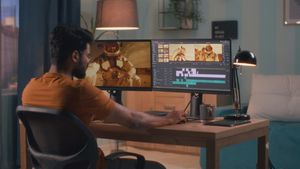Lincroft, NJ, July 18, 2025 (GLOBE NEWSWIRE) -- Brookdale Community College students Eduardo Coelho and Natalie Torres won first place in the prestigious national Community College Challenge for Architectural Practice (CCCAP), outshining nearly 800 student participants from across the country—including programs in New York, San Diego, Washington D.C., and Washington State.
The CCCAP is one of the most competitive national architecture competitions for two-year schools, with occasional participation from major universities. From an initial pool of over 450 student submissions, entries were narrowed through regional reviews before being evaluated by a national jury, which selected just five finalists. Of those five, Brookdale's Coelho and Torres were awarded the top honor for their project, LISTENING TO THE LAND Activity Wellness Center.
"This is a huge achievement—not just for Eduardo and Natalie, but for the entire Brookdale Architecture program," said Architecture Professor Ed Oneill, who co-taught the course that submitted five projects to the national competition alongside Professor Bob Longo. "Our students competed against the best in the country and came out on top. It's a testament to their vision, discipline, and deep engagement with the material."
The competition prompt challenged students to design a wellness center that addresses access to healthcare in underserved rural areas, specifically in the Upper Midwest. The Brookdale team's winning concept imagines a site in a small town of about 5,000 people—nearly half of whom are of Indigenous descent—located near a high school and adjacent to a park.
Inspired by Anishinaabe worldviews of interconnectedness (Gakina-awiiya), Coelho and Torres framed their design around a simple but profound question: "If the land could speak, would we listen?" In their words, "Some communities never needed to ask. They've always listened. In Native American culture, it's a way of life—integral relationships shaped by reciprocity, returning to the land what it gives to you."
Their approach—honoring land, spirit, and community—was far from conventional. The students utilized climate data and digital wind simulations to shape the structure's form, allowing southwest winds, symbolic in Indigenous culture as forces of growth and vitality, to inform the building's orientation and movement. The result is a structure that feels sculpted by nature itself—emerging from the ground and flowing with the wind.
Design Highlights of LISTENING TO THE LAND:
Emergent Form & Wind Simulation: Using digital tools, the students simulated prevailing southwest wind patterns to determine the building's unique, organic form. The result is a structure that looks like it has risen from the earth and been sculpted by the wind over time.
Cultural and Environmental Integration: The site is thoughtfully placed to engage with the adjacent park and community, and the building includes references to Indigenous perspectives that value harmony with nature and interdependence.
Innovative Use of Materials: A translucent recycled polycarbonate roof bathes the interior with soft, natural light, while the timber post-and-beam structure blurs the boundary between interior and exterior spaces.
Programmatic Design: The center features multipurpose activity spaces, group gathering rooms, a demonstration kitchen, exercise facilities, child care, a mobile clinic, and an outdoor educational garden—all designed to promote accessibility, well-being, and cultural learning.
Sustainability Features: Geothermal heating and cooling, green roofs, greywater collection systems, and native vegetation such as Sugar Maple and Panicum Virgatum contribute to an environmentally sustainable site.
Outdoor Zones: The exterior spaces include a sunken activity area for privacy and flexibility, a community amphitheater, and an educational garden that supports cooking demonstrations and lessons in growing food.
"I'm incredibly proud of the research and intentionality that went into every decision we made," said Torres during the project presentation. "We let the land guide the form, and we designed each space to meet the needs of a real community, even if our site was hypothetical."
"When you enter the building, you're entering with the wind," added Coelho. "You're immediately immersed in a space that reflects motion, light, and belonging—exactly what we hope a wellness center should feel like."
Interior Design Professor Celeste Chirichello, Architecture Instructors Nicholas Fontana, and Isiah Brinson also provided mentorship throughout the semester, along with support from Assistant Professor-Graphic Design Trent Welcome and Art Instructor Elisa Elorza. Their guidance helped Coelho and Torres refine their concept, deepen their cultural research, and develop an award-winning final presentation.
While competition rules prohibited digital animation as part of the official entry, the students created a wind simulation video to demonstrate how wind flow shaped the final form—a compelling visual available through a QR code. "If you saw the digital file," Professor O'Neill said, "you'd be even more impressed."
This national recognition brings prestige not only to Brookdale's students but to its growing Architecture program—proving that with creativity, rigor, and purpose, community college students can lead the conversation in design innovation on a national scale.
To learn more about Brookdale Community College's Architecture program, visit brookdalecc.edu.
Attachments
- Rendering LISTENING TO THE LAND
- Left to right: Architecture Professor Ed O'Neill, Interior Design Professor Celeste Chirichello, Students Eduardo Coelho, Natalie Torres, and Assistant Professor Graphic Design Trent Welcome.

Laura Oncea Brookdale Community College 732-224-2967 loncea@brookdalecc.edu





